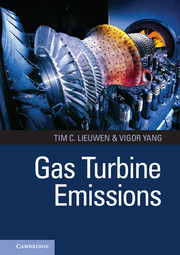Preface
Published online by Cambridge University Press: 05 June 2013
Summary
The development of clean, sustainable energy systems is one of the grand challenges of our time. Environmental and energy security concerns, coupled with growing energy demand, require us to increase, diversify, and optimize the use of energy sources while reducing the adverse environmental impacts of energy production, transmission, and use. In particular, we are confronted with four interacting issues: climate change, local air and water quality, energy supply, and energy security. Global warming has led to significant discussions about reductions of carbon dioxide emissions. Meanwhile, concerns about energy security and supplies for a growing utilization base are driving us to consider broader and more reliable energy resources. Finally, local air quality concerns are driving interest in other pollutants that lead to, for example, acid rain or photochemical smog, and that have additional implications for the management of power plant operations and emissions.
Gas turbines will continue to be an important combustion-based energy conversion device for many decades to come, for aircraft propulsion, ground-based power generation, and mechanical-drive applications. At present, gas turbines are a principal source of new power-generating capacity throughout the world, and the dominant source for air-breathing flight vehicles as well. Over the last decade, power generation from alternative sources, such as solar and wind, has significantly increased. Nevertheless, most projections indicate that the relative fraction of energy supplied by these sources will remain small, even several decades from now. These projections also indicate that gas-turbine-based combined cycle plants will continue to represent the majority of new power generation capacity. Moreover, as the supply of intermittent renewables grows, gas turbines will play an increasingly important role in stabilizing the electrical grid, where the supply and demand of electric power must match at every instant in time. The topic of gas turbine emissions, both traditional pollutants (NOx, CO, UHC, particulates) and CO2, is clearly of significant interest.
- Type
- Chapter
- Information
- Gas Turbine Emissions , pp. xv - xviPublisher: Cambridge University PressPrint publication year: 2013



